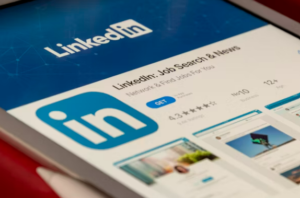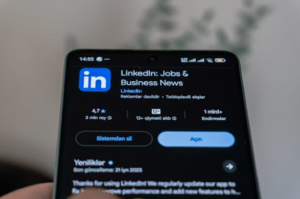Communication
There are four major sections on this page:
- Professional Communication
- Communicating in a New Business Culture
- Empathy
- Marketing your Skills in your Field
Choose one of the sections that’s most relevant to your situation, read that section, and complete one learning activities in the section.
Professional Communication
In order to be an effective communicator, you need to consider a few important communication aspects.
Audience

To whom are you speaking, writing, or presenting?
What is their level of understanding of your topic?
What is their level of interest in what you have to say?
Purpose
 What is your goal for your communication?
What is your goal for your communication?
- To inform other co-workers?
- To inform a manager?
- To persuade others to adopt a new policy?
- To teach others about a new policy that’s been adopted?
Medium

How have you chosen to deliver your message, and do you have reasons for choosing this medium?
How are similar messages usually delivered in your organization – through email, meeting announcements, or online newsletters?
Have you considered the benefits and drawbacks of the chosen medium, and what will you do to reduce drawbacks?
Role & Context

What is your role in the organization, and what is your audience’s role?
What type of organization are you a part of? Formal? Informal? Top-down? Flat?
What tone and approach will work best with your role and context?
Read Coursera’s page on Important Communication Skills and How to Improve Them.
This page moves from a general discussion of communication skills to more specific tips on how to improve communication skills in a workplace environment.
Then consider your own experience with communicating in the workplace, in terms of:
- written communication
- verbal communication
- non-verbal communication
- visual communication
Do you normally ask yourself the questions about audience, purpose, medium, role, and context before you communicate? Or do you just start talking or writing? Consider where you are on the gamut of mindful professional communication.
Learning Activity for Professional Communication
Introductory Level

Consider a professional communication situation that did not succeed. It can be a situation in which you were involved, or one that you observed.
Analyze the situation with reference to the communication concepts in the reading. In a 3-4 page analysis, do the following:
- describe the situation
- analyze each factor that went wrong to create the ineffective communication
- evaluate what could have occurred to make the communication effective at each wrong turn
Learning Activity for Professional Communication
Advanced Level
Part 1

Identify an upcoming communication that you have to participate in at work. It can be something you need to create yourself, or it can be a communication that you’re working on as part of a group. Describe the situation.
Part 2
Create a situational analysis, which is like a background or planning document for the communication. A situational analysis identifies and provides information about all of the variables in a communication situation, in order to plan to address those variables effectively in the communication.
Communication Variables
| Audience | all of the variables that deal with the backgrounds and current roles of your listeners or readers – their interests, cultural heritage, education, employment, age, understanding of your topics, role with the company, values, etc. |
|---|---|
| Purpose | the reason why you are creating the communication; what you hope to have happen as a result of the communication |
| Content | the information that you want to send in the particular situation; your main idea |
| Role | your position in the communication (employee, manager, trainer, trainee, etc.) |
| Tone | the way in which you want to communication to “sound” (straightforward, friendly, authoritative, etc.) |
| Organizational & Cultural Contexts | what characterizes the organization: its values, shared history, how communication flows, its level of formality or informality, its goals, etc. Also what characterizes the individual or group in terms of nationality, age, gender, etc. |
| Medium | the way in which the communication is sent (e-mail, in-person discussion, memo, report, blog post, etc.) |
| Constraints | the things over which you have no control (available time in which to create the communication, expectations for format, etc.) |
(Note that a situational analysis identifies the type of information and characteristics of the communication situation; it does not provide the actual information or communication itself.)
Part 3
Explain how you will use the information in the situational analysis to create the communication – why you will use certain approaches, language, etc. (You do not have to do the actual communication.)
Communicating in a New Business Culture
View the following video on cultural differences, to initiate thinking about communicating in a new culture.
View the following video on foreign customs, narrated by a professor at the University of Tasmania, University College. The video provides a fuller definition of the concept of culture and its applications to doing business internationally.
One of the concepts in the video deals with direct and indirect communication, understanding whether you should state a concept blatantly or lead into it more circuitously, based on cultural practices and values.
In a formal study of communication, this concept is called high vs. low context. Higher-context cultures expect indirect communication, while lower-context cultures expect more direct communication.
Read about high and low context cultures:
- High-context and low-context cultures
- What are the differences between high context and low context cultures?
- The 6-D model of national culture
- If you’re interested, you can take the Cultural Context Inventory downloadable PDF.
In addition to defining culture by nation, you can also consider different cultures in the workplace, especially if you are going into a new job, or if you have experienced that your communication style doesn’t seem to be the right “fit” for your current workplace.
Learning Activity for Communicating in a New Business Culture
Introductory Level

Choose a culture unfamiliar to you, one that you’d like to learn more about. It may be the culture of someone you work with, or it may be a culture that you know your company will be doing business with. Find 2-4 different resources about that culture, and create a list of business “do’s and don’ts” based on your research. You may want to structure your research in one of the following ways, using:
- the 7 dimensions of workplace culture
- Dr. Rajendra Curry’s dimensions of values, customs, religion, etiquette, infrastructure, and social institutions
- Hofstede’s 6-D model of national culture
- or any other structure that makes sense to you, given the research you uncover
Submit:
- list of do’s and don’ts
- bibliography
Learning Activity for Communicating in a New Culture
Advanced Level
Complete the initial learning activity above.
Then work with the following scenario.

Your company, which sells specialty cookware (pots, pans, kitchen utensils), has gone international. You work in digital marketing. You are charged with working with your counterpart in ___ (the culture you researched) on a digital marketing project with the goal of highlighting the global reach of the product as a method of promoting sales. You have not met your counterpart, but know that you both are expected to deliver a marketing plan to management in two months.
Create the following, applying what you learned through your research into the culture new to you:
- an overall communication strategy for working together – what are the top 5 things you need to keep in mind during this project? – and rationale for this overall strategy
- a rationale for the medium of the introductory piece and the actual introductory piece
- an agenda for your first meeting and rationale for your method of approach
- concepts that you would include in a marketing plan, and a rationale for inclusion
Submit:
- list of do’s and don’ts
- bibliography
- the four items listed above
Empathy
Empathy is an important aspect of effective communication. Empathy means to put yourself in another’s shoes, to understand experience from another’s perspective. According to Dictionary.com, empathy is
“the psychological identification with or vicarious experiencing of the feelings, thoughts, or attitudes of another.”
That’s the simple definition. For a fuller definition, which also draws upon brain science, history, and sociology, view the following video.
Empathy is not just an abstract concept. It’s referred to as an important characteristic in customer service, for example, in the HEARD technique (from Disney[1]) of engaging with customers:
| H | Hear | Listen to the customer and let the customer explain as fully as he/she wants to explain. |
| E | Empathize | Show through your language that you understand how the customer feels. |
| A | Apologize | Apologize if you can do it sincerely. Your tone will tell. |
| R | Resolve | Quickly move to conclusion, asking what you can do to correct the situation. |
| D | Diagnose | Diagnose why the situation happened, and focus on solutions so that a similar situation does not happen again. |
For a very concrete example of showing empathy through your communication, view the following video.
Empathy is an important communication skill. You will be a more effective communicator if you can express understanding of where another person is “coming from,” and how another person perceives experience.
Watch the following video and consider how the experience would be different with more empathetic communication.
The video “Bad Customer Service Rep” is also available with closed captions.
Although it’s obvious to consider empathy in terms of customer service, realize that empathy supports effective communication in all phases of experience, from work to parenting to friendship.
Learning Activity for Empathy
Introductory Level
Part 1

Consider a situation at work that did not go well because a person or group was not empathetic in communicating to their audience. Explain the situation.
Part 2
Evaluate how more empathic communication might have helped the situation become resolved with a more positive outcome.
Submit your evaluation in one of the following forms:
- a brief essay (2-3 pages)
- a dialogue
- a short video with “actors” representing the original participants and showing the actual and projected outcomes
- any format that you choose
Learning Activity for Empathy
Advanced Level
Review Rifkin’s video on The Empathic Civilisation. Do further research, analysis, and writing about the concept of empathy. This may take one of many forms:
- Develop an annotated bibliography listing at least 5 relatively current articles dealing with empathy. Read each article in order to create the annotation. Then, in a few paragraphs after the annotated bibliography, link your readings to concepts that Rifkin offers.
- Rifkin asserts that, with our technical abilities to connect, we can re-think the human narrative and prepare the groundwork for an empathic civilization, including not only humans but all aspects of the planet. Do one of the following related to this assertion:
- Option 1 – Respond to this assertion with your reflections, based on your own experiences, observations, and some additional research (at least 1 journal article). What personal experiences support or contradict this assertion? What current events support or contradict this assertion? Do you think that this idea is feasible? Why or why not?
- Option 2 – Create a proposal to present to your local chamber of commerce to offer training in empathic response to your community. Include research (at least 1 journal article) to support your proposal.
- Option 3 – Envision the future that Rifkin asserts is possible. Write a creative piece that illustrates this future, with specific examples in personal, communal, national, international, global, and environmental arenas.
Please identify your choice at the top of the assignment.
Marketing your Skills in your Field

Communication is of paramount importance when you need to market your skills. The way you present yourself professionally can determine if you get a job, a promotion, a raise, a leadership position at work, and more. Learn to use resumes, cover letters, and professional portfolios to their greatest effect.
Resume
Resumes are intended to provide a snapshot of you as a professional—your achievements, jobs, skills. All resumes should contain:
- your name and contact information
- employment details
- education
The rest of the information,and the order of all of the information categories are up to you. Some people include work highlights/achievements, skills, references, and other information. Understanding your job context and the audience for the information will help you identify content and structure of a resume.
There are different kinds of resumes, chronological, functional, and combination.
A chronological resume uses reverse chronological order (most recent first) to list work experience and education information.
A functional or skills resume focuses on special skills and examples of those skills as its main section.
A combination resume may include features of both the chronological and functional resumes, again in whatever order you think best given the job context and audience.
Know that a resume is not a set, stable document—although the information remains essentially the same, the way in which you present that information can and should change, given the position for which it’s intended. Make sure that your resume relates to the job at hand and fulfills the needs of the audience as much as possible.
Resume Tips
- Identify your job title first when providing information about your work experience (not your employer or company name). The focus should be on your work function, as that’s what a reader will want to know.
- Break information into small pieces that can be read and easily retained. Avoid big blocks of type. Bulleted lists and phrases work much better than paragraphs and sentences.
- Work carefully on wording.
- Use parallel action words. “Parallel” means that all of the words within one category have the same grammatical form (e.g., they all end in “-ed” or “-ing”). “Action” means that the words themselves show direct activity (e.g., “managed” instead of “responsible for managing”).
- Use searchable terms, because it’s very likely that your resume will be scanned.
- Use key words from a job description to show a good match.
- Do a Google search for “top resume key words” to get a sense of employers’ current needs.
- Decide whether to include dates. You may want to delete dates of old education but include dates of recent training.
- For paper resumes, stick with just a few margins throughout. Too many margins and indentations make the resume hard to read.
- Don’t be too lengthy; one page is ideal, and two pages are acceptable. If you really need to include more information, use attachments.
- Err on the side of formality, even if you know your audience; keep things plain, simple, and easy to read (e.g., no fancy fonts, multiple colors, etc., unless it’s expected in your profession).
Watch the following videos, which talk about contemporary resume writing. The first is a brief discussion. The second is relatively long, but useful in the concepts it presents.
Cover Information
Cover letters, emails (any type of introductory information) help to introduce your resume. Cover information always need to 1) indicate the specific job for which you’re applying. and 2) focus on the benefits that you bring to the company (aot benefits to you). A reader will not care if your job objective is to move into upper management, or if you want to relocate to be closer to family members. Your audience just wants to know how you can contribute to the workplace. Watch the following video about cover letters, or information that introduces your resume.
Professional Portfolio

A professional portfolio, especially in digital form, is common in the contemporary business environment. A portfolio can house samples of your work, lists of your certifications and trainings, artifacts that provide evidence that you have acquired specific competencies, and endorsements from other professionals.
The act of creating a portfolio also shows that you can reflect, evaluate, and curate information appropriate to a public audience.
Reflection is a powerful learning tool. The act of creating a portfolio requires that you consider your strongest knowledge, skills, and accomplishments to showcase. That also prompts you to consider what worked for you, what was easy or difficult to do, what changes you might implement in the future, and why.
Read the following articles for more information on professional portfolios:
- Building a Professional Portfolio by UC Berkeley Extension, provides a good overview of the purpose and contents of professional portfolios
- 51 Items For Your Professional Career Portfolio + Examples, by Pete Kistler on the website Brand Yourself, offers additional ideas about professional portfolio content
Whatever digital (or print) portfolio structure you decide to use, keep in mind the following usability characteristics:
- logical organization of information, with similar types of information grouped together
- clear, concise, representative headings
- easy navigability
- clean page layout
- visual enhancement of text
Learning Activity for Marketing your Skills in your Field
Introductory Level
Identify a job for which you would like to apply, and copy the job announcement. Then create a cover letter and resume targeted toward that specific job.
Apply the cover letter and resume concepts, creating a cover letter that, like the resume, can easily be scanned.
Submit:
- job announcement copy
- cover letter
- resume
Learning Activity for Marketing your Skills in your Field
Advanced Level
Create a professional portfolio in a digital format.
Apply the professional portfolio concepts that you read about, and tailor your portfolio to your current and potential future professional positions.
As you create the portfolio, consider the following questions:
- What types of information might employers want to see in a professional portfolio?
- How much information is too much for a professional portfolio?
- What are your guidelines about scope and amount of portfolio information?
Submit:
- the link to your professional portfolio
- a brief (2-3 page) rationale discussing the reasons why you chose certain examples and contents
